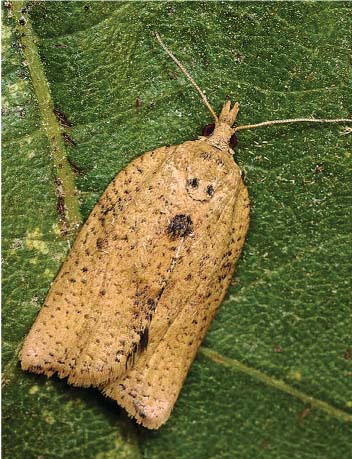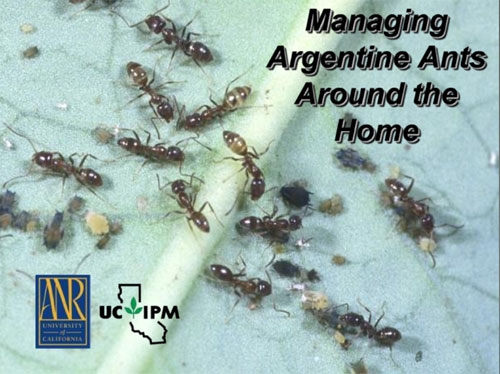
Posts Tagged: integrated pest management
Garden blog features IPM website
The blog "Good Life Garden," developed as part of the UC Davis Robert Mondavi Institute for Wine and Food Science, plugged the UC Statewide Integrated Pest Management website in its most recent "Website Wednesday" feature.
The Good Life Garden itself is an edible landscape in the Mondavi Institute courtyard featuring organic and sustainably grown vegetables, herbs and flowers. Together with the blog of the same name, the garden was designed to educate the public on growing, buying and preparing good tasting and nutritious fresh food.
The blog entry said that last February a pest was found on the bottom of a cabbage leaf. The garden manager turned to the IPM website and found a detailed description that matched the pest, the cabbageworm.
"Voila!" the blog says. "We have a cabbageworm and now know the best way to manage them is by handpicking. Now that was easy!"
The blog also invited readers to post a picture of a pest they can't identify on the Good Life Garden's Facebook page. A question on the page about earwigs refers to an IPM Pest Note on the topic.

Cabbageworm.
Light brown apple moth eradication unlikely
A recently certified report on light brown apple moth asserts that the pest, native to Australia, cannot be eradicated from California.
"Given the increases in LBAM population densities and the extent of contiguous spread of LBAM observed over the past 2 years, coupled with a lack of area-wide management tools, eradication is no longer feasible in California," the USDA report says.
The "area-wide management tools" referred to in the report includes aerial pheromone spraying, which drew the ire of many environmentalists. Instead, control will be attempted with twist-ties that release pheromones and with the release of sterile moths to disrupt breeding.
According to the AAAS ScienceInsider blog by Ingfei Chen, CDFA concurs with the USDA finding. The agency's main goal is to "contain, control and suppress" the pest, Chen wrote. An article in the Stockton Record said ag officials will still try to eradicate small, discrete infestations such as those found in Manteca and Tracy.In an article about the strategy change, the Santa Rosa Press Democrat noted that the January-March 2010 issue of UC's California Agriculture journal included a peer-reviewed article about LBAM control in New Zealand. The article said the moth “is successfully managed” there with modern pest control techniques. LBAM was an economically important pest from the 1960s to 1980s in New Zealand, and developed resistance to broad-spectrum insecticides, but today a combination of biological control and judicious use of selective insecticides keep LBAM at bay.
Chen said in her blog that the new focus on pest control, rather than eradication, is what some critics of LBAM eradication, including UC Davis biodemographer James Carey, have been advocating for some time. Chen is the author of a lengthy profile of Carey and his LBAM views that appeared on the AAAS Science Web site in January.

LBAM is in California to stay.
UC offers solutions to perennial ant problem
Simple, smart and safe ant invasion solutions from UC Cooperative Extension were shared in newspapers around California today. The article, written by John Sammon, originated in the Santa Cruz Sentinel, and was picked up in the San Gabriel Valley Tribune, the Oakland Tribune, and the Pasadena Star-News.
The reporter used a UC Cooperative Extension information sheet as a source for background on ants. His story focused on the common Argentine variety, small black ants native to Argentina, Brazil, Paraguay and Uruguay. The ants reached the U.S. in the 1890s on coffee ships from Brazil.
In California, Argentine ants displace native ants and the small animals such as lizards that depend on them for food. The article said the ants also harm native plants that depend on native ants for seed dispersal, and they protect insect pests on agricultural crops by driving off species that prey on them, according to the UCCE information sheet.
The article also quoted UCCE Monterey County entomologist Jian Bi, who said homeowners should empty trash and make sure food particles are cleaned and containers tightly closed. In addition, he told the reporter that common household cleaners like Pinesol or Windex can be sprayed on ant trails to make the animals confused or disoriented by removing their scent trail.
"Like people, ants are community-oriented," Bi was quoted. "They're also highly organized."
Sammons collected the following strategies for preventing home ant invasions from home improvement and pest Web sites and UC Cooperative Extension:
-
Empty trash frequently.
-
Make sure food particles are cleaned up, counters wiped and food containers tightly closed.
-
Wash invaded areas with warm soapy water, or spray with a household cleaner to remove ant scent trail. A vinegar and water solution will also work.
-
Eliminate ants' water sources, such as leaks.
-
Caulk and seal cracks and crevices around the home's foundation.
-
Remove leaves, mulch and wood near the foundation of the home.
UC has produced a 20-minute video to help consumers identify, understand and manage Argentine ants. In addition, a diversity of resources - including additional videos, information sheets and photos - on ant management are available on the UC Integrated Pest Management Web site.

The opening screen of the UC IPM video about Argentine ants.
Ventura Star reports on Phil Phillips' retirement
The Ventura Star today ran a story about the end of IPM entomologist Phil Phillips distinguished career with UC Cooperative Extension. The story says Phillips was fascinated with bugs since he was 7 years old.
"I've been blessed with a spectacular career," Phillips was quoted. "It's playing with insects basically."
The story was most likely prompted by a news release by UC IPM writer Stephanie Klunk, but Ventura Star reporter Terria Smith gathered her own comments from Phillips' colleagues.
Mary Bianchi, horticulture farm advisor in San Luis Obispo County:
"In order to be able to start effective control programs, you really have to understand insects: where they come from, how they live. That's where Phil's work was key: by building the framework where researchers could start their programs and integrate them into farming systems."
Earl McPhail, Ventura County Agricultural Commissioner:
"He's done great in making sure they know what to do as far as what to look for as new pests come in. . . . He's going to be difficult to replace."

Phil Phillips
Fresno Bee captures the essence of UCCE
Fresno Bee reporter Dennis Pollock captured the mission, message and mindset of UC Cooperative Extension in a prominent article on the front page of the business section on Saturday.
The report was based on a field day in almond orchards near Firebaugh and Mendota, where UCCE advisors shared ways to minimize pesticide sprays, avoid plant diseases and make the best use of limited water resources.
Illustrated with an 8 1/2-by-6-inch color photo of Madera County farm advisor Brent Holtz, the story included information from four current and two former UC experts.
According to Pollock's story:
- UC entomologist Walt Bentley demonstrated the use of egg traps to determine when best to spray for navel orangeworm.
- Holtz warned that hull rot can be worse if too much water is applied, referring to the condition as "good growers disease."
- Retired UC plant pathologist Beth Teviotdale called hull rot the "gout of almond diseases," adding that, "too much food and drink is bad for almonds just like it is bad for us."
- Retired Kern County farm advisor Mario Viveros recommended tying the branches of young trees to prevent wind damage.
- Merced County farm advisor David Doll talked about crown rot and phytophthora.
- A grower credited IPM advisor Pete Goodell for suggesting he use alfalfa as a nursery for good bugs.
My only quibble with the coverage would be with the headline, which proclaimed in inch-high letters, "Nutty advice." Cute, but impertinent.